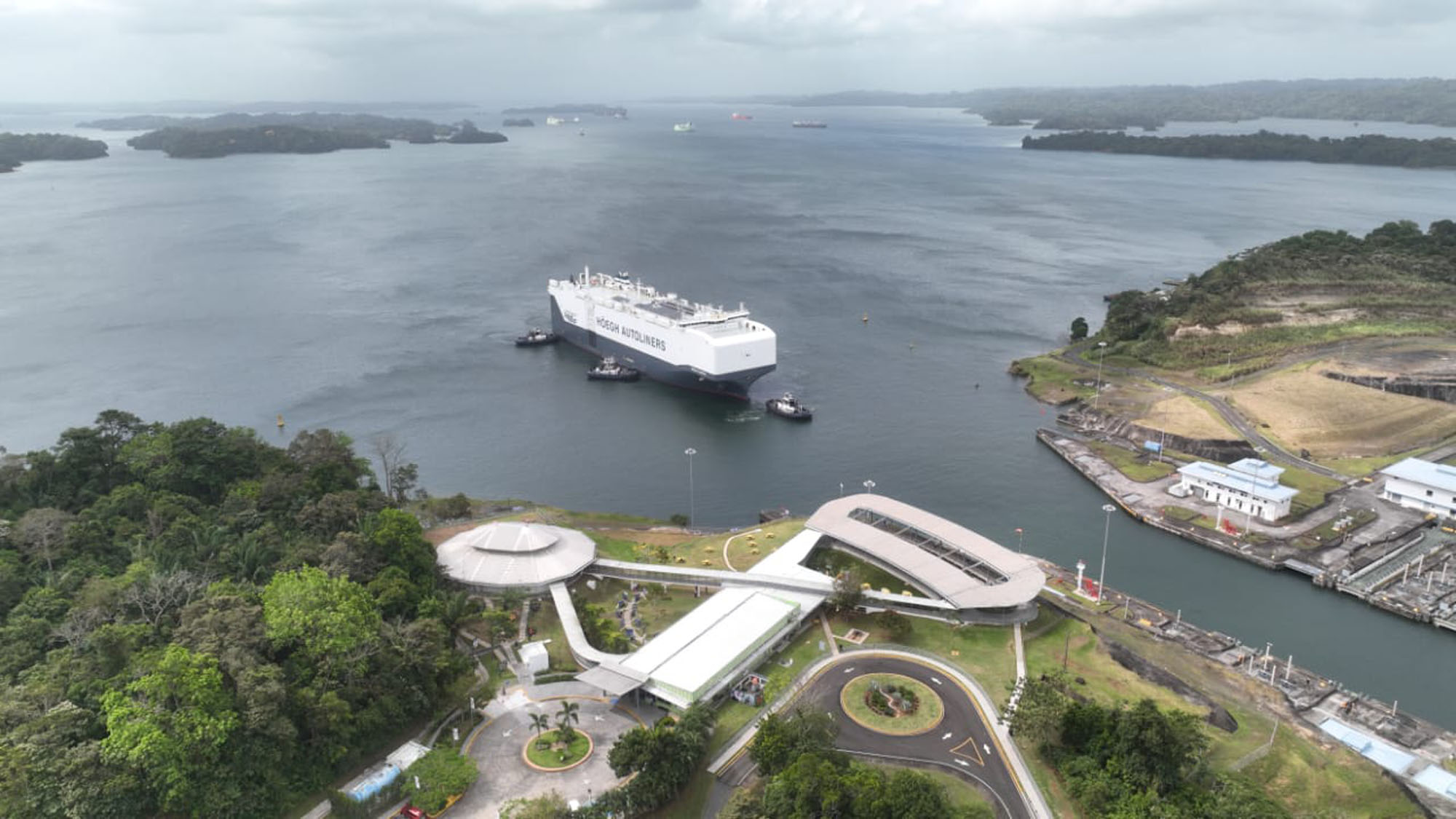TONNAGE INCREASES; ACCIDENTS DROP; INCREASE IN PANAMAX VESSEL TRANSITS
PANAMA CITY, Panama, February 19, 2004 – The Panama Canal Authority (ACP) announced today first quarter operational metrics for fiscal year 2004. These metrics demonstrate the success of the ACP’s recent capital improvements and reflect the Canal’s customer-oriented management. First quarter data reveals improved safety, highlighted by a major decline in reported accidents. Other metrics reveal an increase in tonnage flow, most notably in container traffic. There was also a significant increase in Panamax vessel transits. These metrics are based on operations from October through December of 2003, the first quarter of the ACP’s 2004 fiscal year.
In the first quarter of FY2004, the Canal reduced maritime accidents by 75 percent with only one official accident – compared with four reported in the same period of FY2003. An official accident is one in which a formal investigation is requested and conducted.
PC/UMS tonnage and transits also increased this quarter. Canal tonnage increased 9.3 percent – to 66,825,328 PC/UMS tons from 61,165,336 PC/UMS tons; a 14 percent boost in Panamax vessel traffic factored in the increase in tonnage. Canal transits increased 3.6 percent – to 2,991 from 2,886. There was also a rise in passenger, dry bulk, tankers and container vessels. An 8.3 percent increase in tankers is largely due to more crude oil movements, particularly since Ecuador increased production. A 4.6 percent rise in bulk carrier transits can be attributed to increased steel exports from Asia and increased grain exports from the United States to Asia, especially China.
Canal Waters Time (CWT), the average time it takes a vessel to navigate the Canal including waiting time for passage, for booked vessels (those ships with reservations) increased three percent, to 16.5 hours from 16 hours, while overall CWT increased to 28.7 hours from 22.5 hours. These increases are due primarily to significant maintenance and capital improvements this quarter, which caused three, two-day, short-lane outages. These improvements will enable the Canal to handle increased traffic and bolster long-time reliability and enhance water conservation. This quarter’s capital improvement projects include removal of four Lock miter gates for general overhaul and to install experimental bottom seals on lake gates to reduce water consumption and improve vessel draft reliability.
“Our mission is to make every Canal transit safe and reliable, while offering the best value to our customers. We are pleased with our continued achievements and take special pride in the significant decline in accidents,” said Administrator Alberto Alemán Zubieta. “Although Canal Waters Time increased, it was completely anticipated because of the planned maintenance and capital initiatives. The improvements from these projects were well worth it – they will further enhance overall operations and reliability of the Canal.”
About the Panama Canal Authority
The Panama Canal Authority is the autonomous agency of the Government of Panama in charge of managing, operating, and maintaining the Panama Canal. The operation of the Panama Canal Authority is based on its organic law and the regulations approved by its Board of Directors. For more information, please refer to the Panama Canal Authority’s Web site: www.pancanal.com.
The Authority’s responsibility to the Panamanian people is paramount. The Canal belongs to the people and benefits from the Canal should accrue to as many Panamanians as possible. The Authority will plan its future so that it will continually contribute to the economic development and welfare of the citizens of Panama.
For nearly 90 years, the Panama Canal has served as the global gateway – a pathway for the shipment of major world commodities. Since the end of 1999, the ACP assumed the responsibility for the management, operation and modernization of the Canal as well as the protection and conservation of its watershed.
In the past four years, the ACP has made significant strides – shifting to a market-oriented business model focused on customer service and reliability, making major capital investments for new and modern equipment and machinery, increasing safety and operational efficiency for customers, decreasing the time it takes ships to travel through the Canal and widening and deepening sections of the waterway.
An important transportation link, the Canal services more than 140 different transportation routes from every corner – it is where major trading routes of the world connect and intersect providing safe, reliable and secure passage for all vessels.




